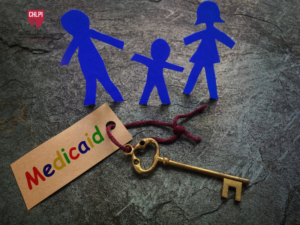Originally written by Tim Paradis and published by Business Insider on 09/10/2023.
Danielle Melgar is working with the caterer for her wedding to make sure that between the “I do’s” and the last dance, food won’t be going to waste.
The October ceremony, at a botanical garden in Michigan, will feature a buffet so guests aren’t served more than they can eat. And there will be containers so people can take home leftovers.
Wanting to limit how much gets tossed at an event she’s hosting comes naturally for Melgar, whose work focuses on food issues. She notes that some 140 million acres of agricultural land in the US are devoted to food that is ultimately wasted. If all that food came from a single farm, it would be about the size of California and New York combined.
“We’re wasting more than enough food to feed every hungry person twice over,” Melgar, who focuses on food and agriculture for the consumer advocacy group PIRG, told Insider.
The waste baked into the US food system is a problem for obvious reasons: People go hungry, money and resources are lost, and landfills, where most surplus food goes, continue to fill up. There isn’t one fix that would do away with the problem, though advocates say consumer education and a renewed push to apply national standards to the “use by” dates manufacturers put on food products could go a long way toward helping the US meet a goal of cutting food waste in half by 2030.
It’s not me, it’s you
Part of the problem with unused food is that because it’s so commonplace, it’s easy to overlook. But it piles up. Estimates vary, but about 30% to 40% of food in the US is wasted. That’s why food is the No. 1 type of everyday garbage making its way into US landfills — comprising some 24% of municipal solid waste, according to the Environmental Protection Agency.
And the biggest contributor to that waste? You and me. Consumers scraping off plates we couldn’t finish or ditching the moldy artifacts we come across in our kitchen are the biggest sources of discarded food in the US — more than the food waste coming from restaurants and grocery stores.
“People often talk about food waste as if it is one problem, but in reality, you’re really talking about fixing the whole food system,” Dana Gunders, the executive director at the nonprofit ReFED, told Insider. She said different factors are at play depending on whether you’re talking about fields of tomatoes that aren’t getting harvested, too many potatoes on a breakfast platter, or “the science experiment in the back of your fridge.”
Emily Broad Leib, the director of the Food Law and Policy Clinic at Harvard Law School, told Insider that many of us don’t realize how much we’re wasting. She pointed to one academic study in which three in four of the consumers surveyed said they got rid of less food than the average American. In her own home, Broad Leib said, once her family started using a composting service that collects kitchen scraps, she realized how much excess food waste her family produced.
“Actually one of the biggest benefits has been when you really see all your food in one place, you start to really recognize what you’re wasting in a way that I think is really beneficial,” Broad Leib said.
All that waste can add up: The US Department of Agriculture estimates the average American family of four loses $1,500 a year on uneaten food. And all that food rotting in landfills produces methane, a greenhouse gas that’s initially 80 times more powerfulthan carbon dioxide before breaking down.
People usually have good intentions when buying food but end up dumping it because there’s just so much of it. We want to be sure we buy enough for a party or for a busy workweek. And some consumers might decide they’re going to start eating better, so they scoop up good-for-you things like leafy greens.
“They might buy a bunch of produce at the grocery store because they want to eat healthy, but then go out for pizza and never get around to it,” Gunders said. “And we don’t really have sort of a cultural taboo on throwing food out as we do for things like littering.”
Beyond not following through on our intentions — or committing the cardinal sin of shopping while hungry — we have an overabundance of inexpensive food available to us.
Gunders notes the average grocery store carries some 50,000 items. And while spikes in food prices have drawn headlines in the past couple of years, costs in the US are lower as a percentage of our incomes than in decades past. That makes it easier to junk our leftovers. And with restaurants and grocery stores, things like labor costs tend to trump concerns about the comparatively smaller expenses tied to food.
Your milk hasn’t gone bad
Another source of the problem in the US, in particular, is that there aren’t federal regulations around date labels on food products other than for baby formula.
“They generally are not indicators of safety. They’re not federally regulated, and they don’t mean the food will make you sick,” Gunders said of the expiration dates on food.
Proposed federal legislation would set standards by allowing “use by” dates to indicate the point after which food shouldn’t be consumed. And it would allow “best if used by” date so producers can indicate when the quality of the food might start to fade.
Some states don’t allow food to be donated after the quality date has passed — another source of unnecessary food waste, advocates say.
“We don’t have a mechanism to show people which of those labels are related to quality versus which foods are really a safety risk,” Broad Leib said.
She said milk is one of the top foods people waste because the date has passed. But, she said, milk can go bad before the date stamped on the container or still be good for days after.
Not wasting so much food could also help combat food insecurity. While not all of it is fit for people, much of what grocery stores or food sellers might discard could still be used.
“Twenty minutes before, it was safe for people to buy, take home and eat. And then all of a sudden, you know, the end of the day comes and it’s not perfect anymore — or the date passes — and suddenly, it’s trash and goes to the landfill,” Broad Leib said.
Wasteless Wednesdays
Part of the fix could involve simple things like making a grocery list, taking inventory of your fridge before you shop, and freezing food before it goes bad. There are various efforts to educate consumers; terms like “stir Fridays” or “wasteless Wednesdays” are meant to prod us to look twice at what we can cobble together into a meal.
Some observers also sense an opening.
“If we are throwing, you know, 30 to 40% of our food away — and the money along with that — there’s actually a lot of opportunity and business proposition in not throwing that out,” Gunders said.
There are apps like Flashfood and Too Good To Go that let consumers buy food that grocers and restaurants would otherwise toss at discounted prices. Hellman’s, the mayonnaise brand, has an app called Fridge Night that helps people figure out what to do with leftovers. And a company called Mill lets you dry your food waste in a mechanized container and mail back the resulting mix to be used as feed on farms. Shuggie’s, a restaurant in San Francisco, uses food that would otherwise go to waste to create meals, including pizzas it refers to as “trash pie.”
Thinking about food waste at every meal
Melgar is focused on policy goals like setting standards around food-date labels because changing consumer habits can be tough.
“There are a lot of solutions that help people compost in their own backyards or make their food last a little bit longer, but it doesn’t necessarily reduce the amount that they’re buying,” Melgar said.
“Our entire goal as a society when it comes to agriculture has been to make sure that everyone has enough food. We have achieved that but we have not acknowledged that,” she said. “And so we have continued to construct our food system in a way that prioritizes producing as much food as possible, when actually we could be lessening the impact of our food system by not producing so much surplus in the first place.”
Melgar said she knew she’d found the right wedding caterer when she learned the woman already had a policy of sending excess food home with her staff rather than throwing it out.
“I’m thinking about food waste every time I have a meal, every time I go grocery shopping,” Melgar said. “So it was very natural that I wanted to have that conversation with someone who’s going to be serving food to a lot of people on a day when I get to control what happens with that food.”


